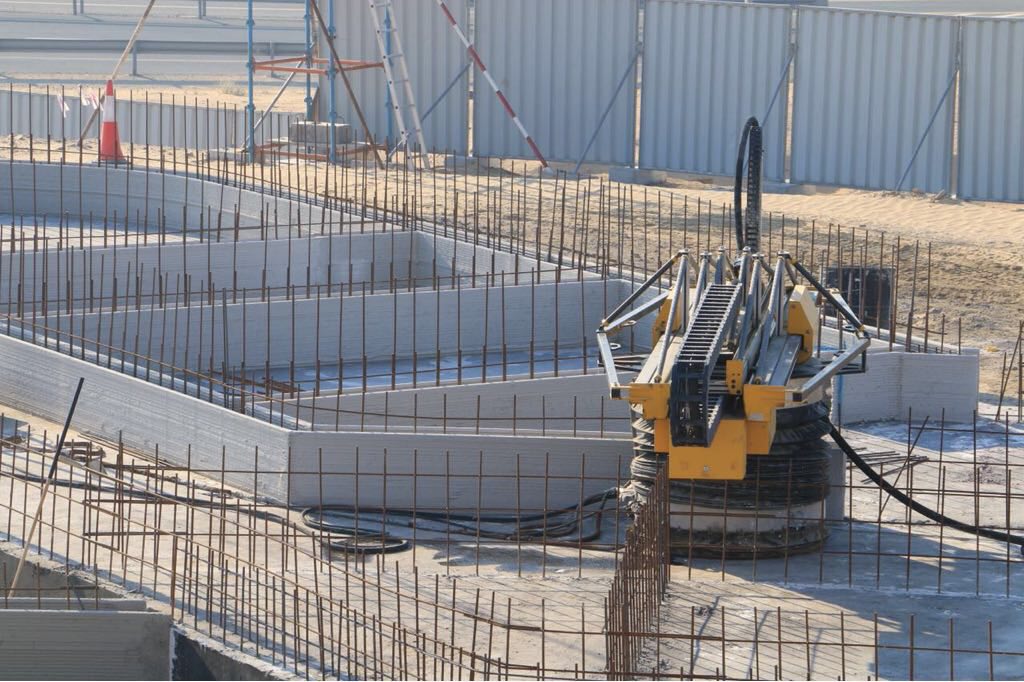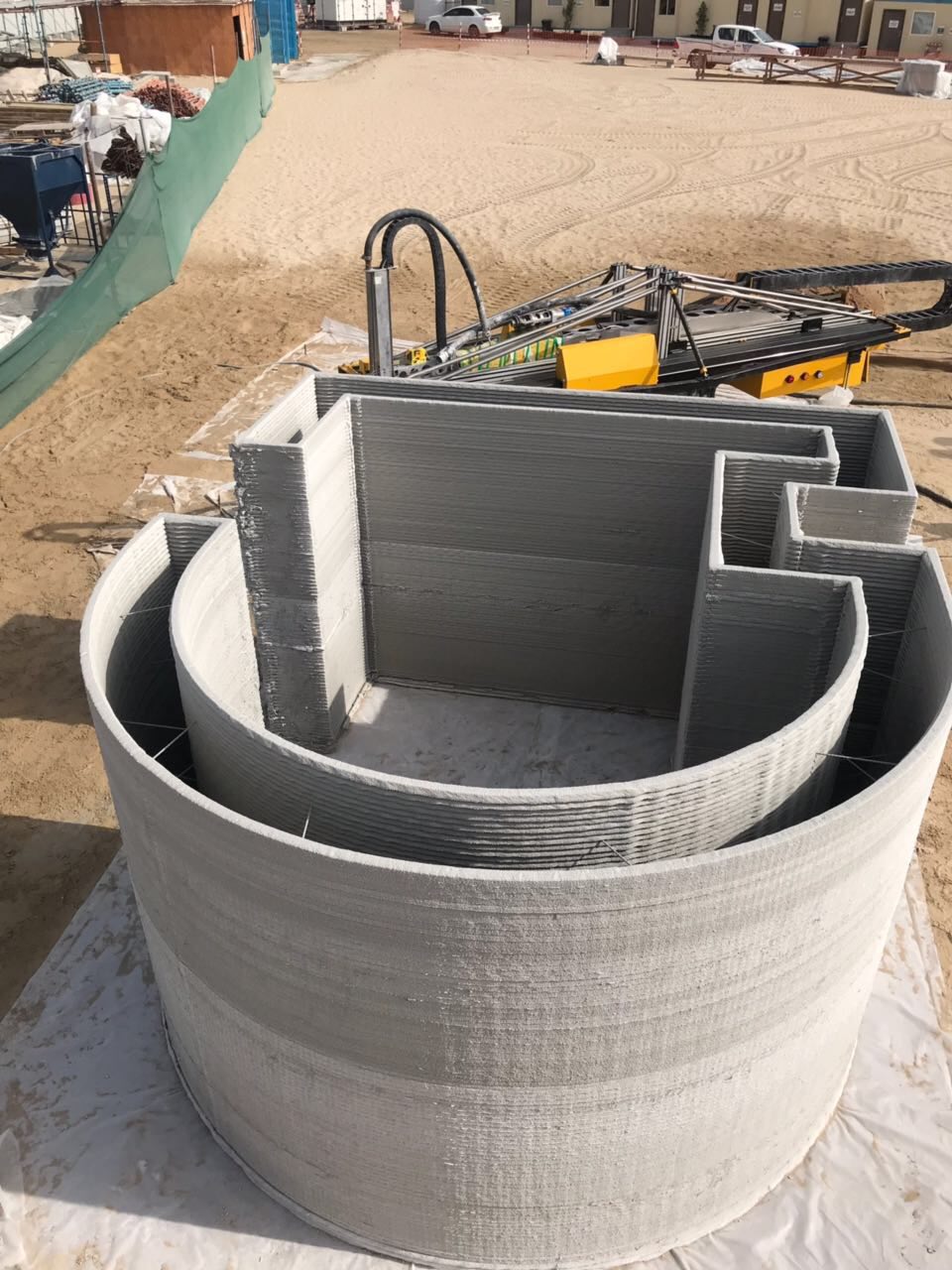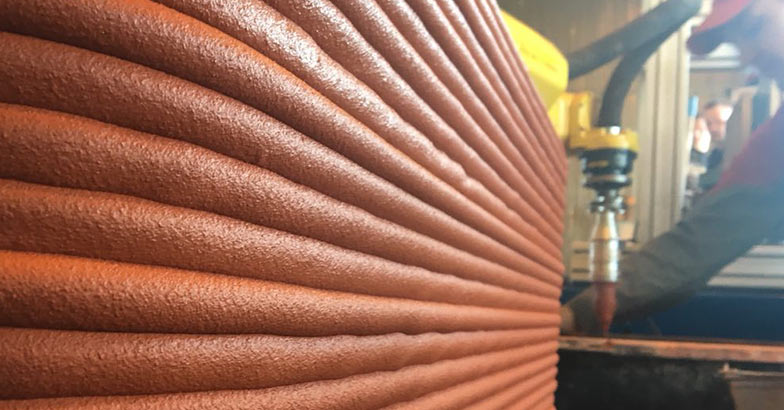Apis Cor participates in NASA’s Phase III 3D-Printed Habitat competition to become the first to start construction on Mars
Apis Cor and SEArch+ participate in the contest "3D-Printed Habitat Challenge", organized by the US National Aeronautics and Space Administration. The main goal of the NASA competition is the promotion of additive technologies that are necessary to create an inhabited environment on Mars.
Reasons to colonize Mars
Taking into account the growth of the Earth's population, in the next 20 years we will have to build the same amount of housing as built in the previous 2000 years.
The population of the Earth is growing. And many scientists and inventors are already concerned with the question of how to act if one day the problem of overpopulation of the planet arises.
Printed test samples by Apis Cor
Mars is seen as one of the most suitable places where people can live in the future. But in order to realize the grandiose plan for the development and settlement of Mars, hundreds of accompanying tasks are to be solved - the flight of the colonizers, the delivery of building materials and earth cultures, the creation of a suitable habitat for man and much more.
Large private companies such as SpaceX, Blue Origin, Virgin Galactic Stratolaunch Systems, have long been engaged in the issue of interplanetary travel and have gone far ahead in this field. As for the potential of building the first houses on Mars, work in this direction is just beginning.
3D printing is the best solution for building on Mars
 In order for pioneers to live and work on the red planet, it is necessary to create an environment that is comfortable for a person. And additive technologies are considered today as the most appropriate way of producing objects, things and resources for creating such an environment.
In order for pioneers to live and work on the red planet, it is necessary to create an environment that is comfortable for a person. And additive technologies are considered today as the most appropriate way of producing objects, things and resources for creating such an environment.
When people land on Mars, certain conditions must be created there. This means that the construction on Mars should be organized so that it takes place with minimal human participation and usage of local materials.
This is only possible if all construction equipment will be as automated as technically possible and ready to use local materials for printing.
Therefore, the main task of the "3D-Printed Habitat Challenge" contest is to activate the development and demonstrate the capabilities of stand-alone construction machines capable of creating a human habitat on another planet - with 3D printing technology based on both processed and local building materials.
Nikita Chen-ium-tai from Apis cor: The solution presented by Apis Cor meets most of the competitive requirements. But it's too early to relax. Nowadays we simultaneously work in two directions: developing a new solution for printing horizontal structures and special building mixtures for them. We already have a successful experience of printing houses on Earth - last year we printed the first house in Russia and want to move on. The NASA competition offers great opportunities for us. It's not just a meeting with like-minded people or sharing knowledge and ideas. This is a chance to apply our experience outside the planet and contribute to the implementation of the mission to develop Mars.
Today, Apis Cor already has a plan to improve the technology
Stage 1 - 2018: Develop a solution for using 3D-printing in multi-story construction.
Stage 2 - 2019: Provide a ready-made solution for printing the entire house - foundation, overlap and roof.
Stage 3 - 2020: Make the equipment as autonomous as possible.
Having achieved the set goals, we will make the equipment almost autonomous. Thus, one step closer to our dream - construction outside of our planet. We want to be the first to begin construction on Mars. In order for future people could live on another planet, it is necessary to do a great job, perhaps for decades. But we are sure that the technology we are improving today will help the Earthmen to colonize Mars in the future and become a multi-planet race. Thanks to the work of NASA, this moment is getting closer every day, says Nikita Chen-yun-tai.
 In order to create a developed infrastructure on Mars, it is necessary not only utilize the work of building robots, but also the support of people from the Earth - architects, engineers, inventors, who will create the concept of the future habitat. Therefore, Apis Cor and SEArch+ have joined their forces to work on a competitive project.
In order to create a developed infrastructure on Mars, it is necessary not only utilize the work of building robots, but also the support of people from the Earth - architects, engineers, inventors, who will create the concept of the future habitat. Therefore, Apis Cor and SEArch+ have joined their forces to work on a competitive project.
SEArch+ (short for Space Exploration Architecture) develops concepts to support long-term human habitability for space exploration. SEArch+ is the former winner of NASA’s Phase 1 3D-Printed Habitat Challenge, and continues to develop habitability concepts with NASA Langley and others within the aerospace industry.
Competition from NASA has several phases. It started in 2015, and the organizers announced the beginning of the first phase, under which the participants had to create a design concept for the base on Mars. According to the idea of the organizers, each new phase of the competition should be more difficult than the previous one, therefore the conditions of the competition are being improved and changing every year. In the second phase of the contest, held in 2017, the participants performed more than one task but two – to develop the design of a certain construction and embody the idea with the help of 3D-printing technologies.
In 2018, the third phase of the contest has begun. It has three levels and presents more stringent requirements to the participants than the first two.
The participants of the competition will have to solve three complex tasks: to develop the design of an object and think of building materials, demonstrate the printing of test samples and to print the real building according to the design using the developed materials.
The winners will receive cash prizes, which are given for each level. But the most important award for the winner will be the printing of the building according to a team-developed design at the Caterpillar research base in Peoria, Illinois in May 2019.
